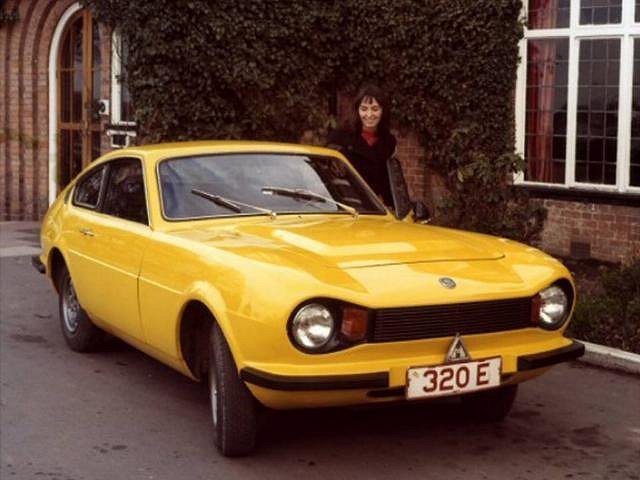The 1970s marked a pivotal era in automotive history, when countries beyond traditional manufacturing powerhouses began crafting their own sports cars. In this landscape of automotive ambition, Turkey made its bold statement with the Anadol STC 16 — a fiberglass-bodied sports car that challenged conventional wisdom.
Breaking away from the realm of licensed productions, Anadol’s engineers embarked on an independent journey to create something uniquely Turkish. The STC 16, with its sleek profile and innovative construction, represented more than just a car; it embodied Turkey’s aspirations in the automotive world.
Design Philosophy and Construction
The Anadol STC 16 emerged from a fascinating blend of necessity and innovation. Standing just 1,280mm tall and stretching 3,980mm in length, its compact dimensions masked a revolutionary approach to sports car construction. The design team chose fiberglass reinforced plastic (FRP) for the body — a decision that would prove both controversial and brilliant.
Fact!
The Anadol STC 16 was one of the few production sports cars in the 1970s to feature a complete fiberglass body, predating similar approaches by many mainstream manufacturers.
Every curve and contour of the STC 16 served a purpose. The lightweight construction allowed for superior power-to-weight ratio, while the modified chassis provided exceptional handling characteristics for its time. The car’s width of 1,640mm gave it a stable stance on the road, essential for its sporting pretensions.
“Working on the STC 16 prototype was like glimpsing into the future of automotive design. The use of fiberglass wasn’t just about weight savings — it was about proving that Turkish engineering could innovate beyond traditional methods.” — Mehmet Yilmaz, Former Anadol Development Engineer
The most striking aspect of the STC 16’s design wasn’t just its materials, but how they came together. Each of the 176 units produced represented a careful balance between performance aspirations and practical constraints.
Performance and Engineering
At the heart of the STC 16 beat a Ford-sourced inline-four engine, but what Anadol’s engineers did with this powerplant showcased their ingenuity. The standard 1.6-liter engine produced a respectable 78 horsepower, but it was the high-performance variants that truly captured enthusiasts’ imagination.
The rally-spec version of the STC 16 demonstrated the platform’s true potential:
- modified engine management delivering 140 horsepower;
- reinforced suspension components for improved handling;
- upgraded brake system for enhanced stopping power;
- lightened interior components for better power-to-weight ratio;
- specialized rally-tuned transmission setup.
These modifications transformed the STC 16 from a capable sports car into a legitimate competition machine. With 200 Nm of torque available at 2,600 RPM, the car offered impressive acceleration for its era.
Racing Heritage and Legacy
The STC 16’s competition pedigree went beyond mere specifications. This Turkish sports car proved its mettle on various rally stages, where its lightweight construction and nimble handling characteristics shone through.
“The STC 16 wasn’t just quick — it was predictable at the limit, which made it perfect for rally stages. Its fiberglass body meant we could repair damage quickly between stages, giving us a significant advantage.” — Ali Kemal, Former Rally Driver
Historical Reference!
The Anadol STC 16's participation in various Turkish rally championships helped establish the country's motorsport culture, inspiring a generation of local racing drivers and engineers.
The car’s influence extended beyond the racetrack. It demonstrated that Turkish automotive engineering could compete on an international stage, paving the way for future developments in the country’s automotive sector.
Cultural Impact and Collectible Status
Today, the Anadol STC 16 stands as more than just a historical curiosity. With only 176 units ever produced, each surviving example tells a story of Turkish automotive ambition and engineering prowess.
Important!
Original STC 16 models are increasingly sought after by collectors, with well-preserved examples commanding significant premiums in specialized classic car markets.
The car’s rarity, combined with its historical significance, has elevated it to cult status among automotive enthusiasts. Each surviving STC 16 represents a tangible link to a pivotal moment in Turkish industrial history.
The preservation of these vehicles has become a passion project for dedicated collectors and restorers, who understand the car’s importance in the broader context of automotive history.
Looking Back, Moving Forward
The Anadol STC 16 represents more than just Turkey’s first sports car — it embodies a spirit of innovation and determination that continues to inspire. Its development proved that with vision and engineering talent, emerging automotive nations could create vehicles worthy of international recognition.
The legacy of the STC 16 lives on in Turkey’s modern automotive industry, where lessons learned from its development still influence approaches to vehicle design and manufacturing.
Pros & Cons
| Advantages | Disadvantages |
|---|---|
| Revolutionary fiberglass construction reducing weight significantly | Limited production run affecting parts availability |
| Impressive power-to-weight ratio in rally specification | Basic interior compared to contemporary European sports cars |
| Unique design with historical significance | Relatively modest performance in standard form |
| Excellent handling characteristics for its era | Limited export market presence |
| Strong motorsport heritage in Turkish rallying | Challenging restoration due to specialized materials |
| Pioneering use of alternative materials | Variable build quality across production run |
| Cultural significance in Turkish automotive history | Limited technical documentation available today |
The Anadol STC 16 stands as a testament to Turkey’s automotive ambitions of the 1970s. While it may not have achieved widespread international recognition, its innovative approach to sports car construction and significant cultural impact make it a fascinating chapter in automotive history. For collectors and enthusiasts interested in unique sporting machines, the STC 16 offers a compelling combination of rarity, historical significance, and engineering innovation.

